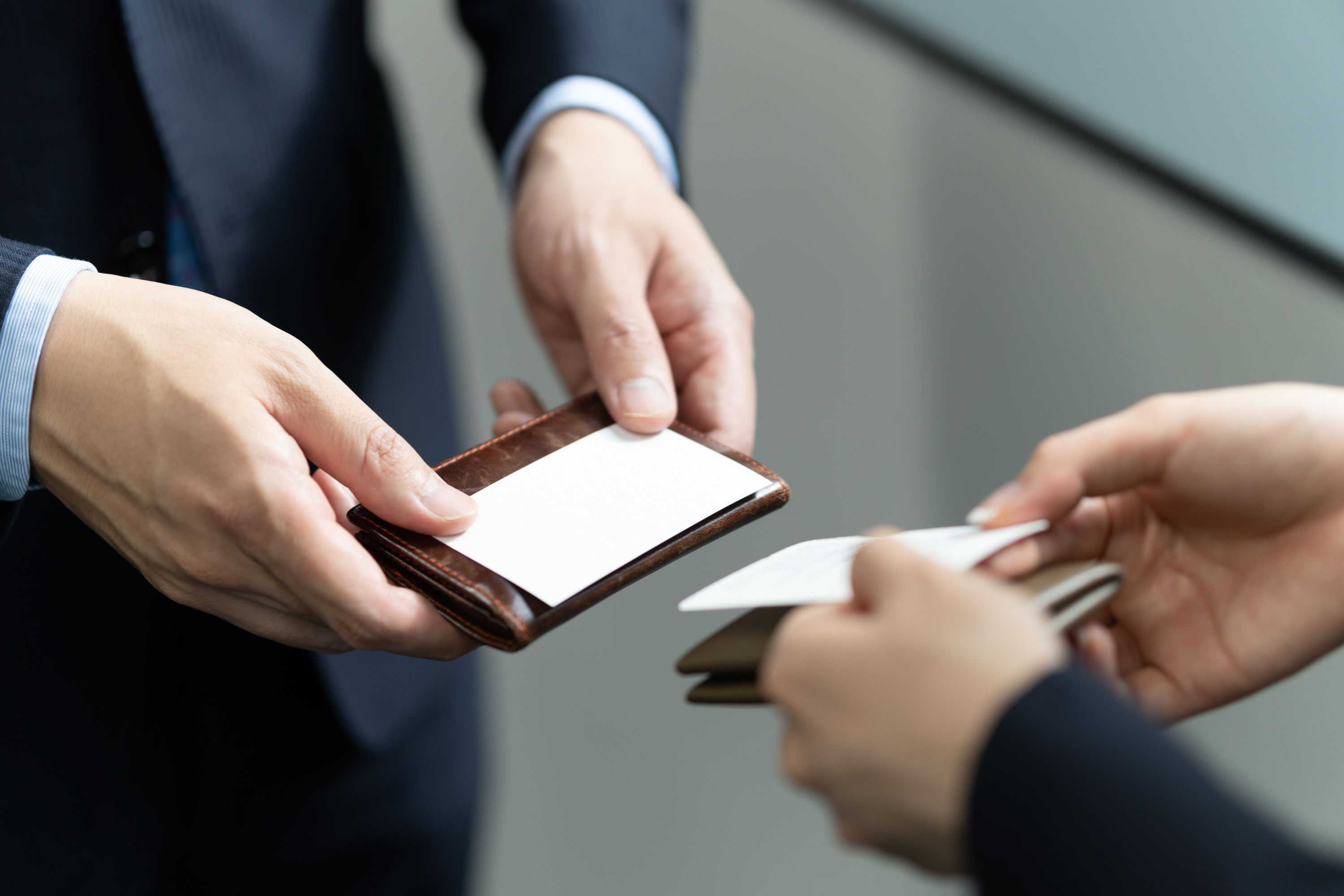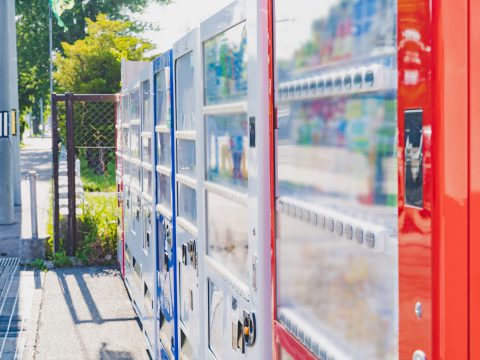Japanese work culture:Business card exchange (Meishi Koukan) めいしこうかん
WORK’IN JAPAN
31.01.2020
Japanese work culture:
Business card exchange
(Meishi Koukan)―名刺交換―
めいしこうかん
Exchanging business cards in Japan is a characteristically Japanese experience. It has order, rules, and it’s easy to mess up. That’s why you’ll get a leg up if you, as a non-Japanese, master this process and sharpen your etiquette. You probably know at least a little something about Japan’s many customs in daily life and in business. When you’re working on a deal with the Japanese, all of that knowledge helps, especially in business transactions, which all start with giving and receiving cards. It’s not only part of networking, it’s part of basic communication. Exchanging these paper cards, has a whole slate of rules in Japan, built up over centuries. Books are written about it. People take classes on it. This may sound daunting, but you’ve got two things working in your favor:
1) Being non-Japanese, there’s much less pressure on you.
2) Knowing just a little about how to conduct business in Japan the “right” way will make a great impression.
Business cards are Supremely Symbolic
Business cards are no small matter in Japan. They have their own culture and a special symbolic value. Keep these things in mind, even if they’re different than where you come from.
- The cards represent—some say they embody—their owner.
- There are only a couple of right ways and infinite wrong ways to exchange them.
- Treating a card with disrespect can hurt your business chances. Sometimes seriously.
For the sake of your foreign relations and international trade, it’s best to sharpen your business etiquette and do things as the Japanese do, as best you can.
Prepare for Your Business Card Exchange Before You meet
In Japan, swapping a grubby card from a scuffed up old leather wallet can be worse than having no card at all. So, before you start your exchanging, some preparation is necessary.
- Get a good business card case/holder: The case is part of the card exchange. Get a case with enough room to accommodate irregular and larger cards. European and North American cards have different standard dimensions, with North American cards being the smallest. Make sure you’ve got room for the slightly bigger Japanese cards.
- Get good-quality business cards: If your company issues you a standard card, use that if it’s an established company. If it’s a small business with lower-quality or very quirky cards, ask your boss to fund something nicer and more conventional.
- Bring lots of cards: If you have meetings lined up, you’ll need a card for everyone who shows up, if possible. Be sure to have plenty of extras on hand. If you’re taking in a convention or conference, bring a few hundred. It’s better to be prepared in Japan than to be empty-handed.
The Rules for Business card Exchange in Japan
▶Before You Even Meet your Japanese Counterparts
Find out how many people you’ll be meeting. At the meeting place before you meet anyone, take out that number of business cards and place them atop your case, with the print facing away from you. If there’s a Japanese side on your card, place that upward.
▶How to Do the Card Exchange
First, relax. Even Japanese can get a bit confused when figuring out who goes first. This results in a great deal of apologizing and nervous laughter, but the cards eventually get passed and business goes on.
▶The Proper Order
The most senior/highest-ranking people exchange cards first. Typically, the visiting part will also initiate the exchange.
▶The Motions
Common knowledge is that business cards are given and received with two hands in Japan. But something funny happens when two people try to do this at the same time… It is physically impossible. There is, of course, a right way to do it, and two hands are used only if it is a one-way card swap from cardholder to awaiting hands.
▶The Swap
Hold the card case, card(s) atop it, with two hands until the start of the exchange. Take your card between the thumb and index finger of your right hand. Do your best not to cover any print, such as your company logo or your name. Your counterpart will do the same.

Now comes the exchange.
Your right hand delivers the card to their left hand, and vice versa, at the same time and with a slight bow. The person in a lower-ranking may bow just a bit deeper. Your card should go under theirs if they are in a superior position (e.g., customer, CEO, prime minister). As you do this, maintain a smile and friendly eye contact and introduce yourself, either in Japanese (if you can) or English. If in English, state your full name and your company and give a greeting (e.g., “I’m John Smith from Ohio Steel. It’s very nice to meet you.”). If in Japanese, use your last name and your company. Your counterpart will do the same. Though it is a one-handed exchange, use your other hand to secure the card as soon as you’ve passed off your own card.
The Admiration
Accept the card atop your card holder and again be careful not to cover anything with your thumbs. Spend a few seconds examining the card. This, too, is part of the process.
A few other business card exchange tips to keep in mind:
- Keep your cards spotless, dry, and unmarked always. A dog-eared or dirty card makes you look sloppy or rude. Your high-quality business card case is invaluable here.
- Stand up when exchanging cards.
- Get just close enough to comfortably exchange cards, unless there is something between you, such as a table. About 1 meter is a good distance.
- Passcards hand-to-hand. Never toss them like a blackjack dealer.
- Even if you can only remember one Japanese phrase, such as hajimemashite(Pleasure to meet you) or yoroshiku onegai itashimasu (“I look forward to working with you”), use it without embarrassment. It shows you care and you’re making effort, and you’ll usually be praised for it.
The Procession
Now on to the next exchange. With cards swapped and everyone having met everyone else, you’ll continue to a meeting room or another place to talk. What you need to do is keep all the cards out and atop your case and try your best to remember who’s who. If you’re in a standing situation, keep the person’s card out. Don’t put it away in your holder unless something requires use of both your hands.
The Treatment and Placement
While the exchange is done at this point, the business card now takes on a role as a signpost and a useful reminder. In the meeting place, either keep the business card atop your holder and facing you (if there is only one person across from you) or arrange the cards on the table and facing you (corresponding to where each person is sitting). Alternatively, you can arrange them in a vertical column in order of seniority. If you were given cards from people no longer there, put those in your card case. Japanese meetings, at least at the start, are typically conducted across a table; be it in a conference room or at dinner. If documents and other things start to get in the way of the cards, only put them away if there’s no space or when the meeting is finishing up. In many cases, you’ll have a Japanese counterpart whose lead you can follow.
However, if you’re in a totally non-Japanese and inexperienced group, or on your own, the safe thing to do is observe and copy what the other Japanese are doing. These are the general way things go, and they’re consistent from meeting to meeting. However, it’s not uncommon for someone in a position of authority to put your card away earlier or otherwise “break” a few of the rules. Don’t be offended. They’ve earned it through time and seniority.
Resource: sansan jpgui.de








